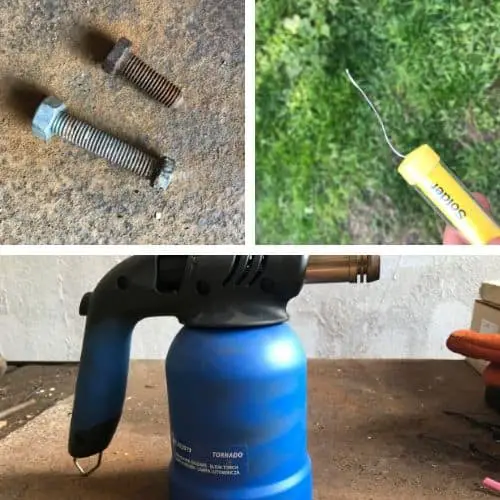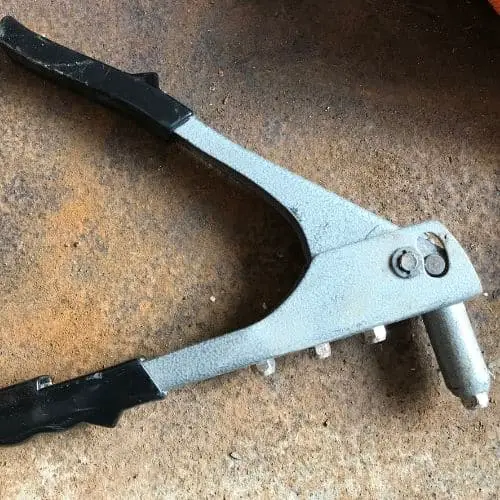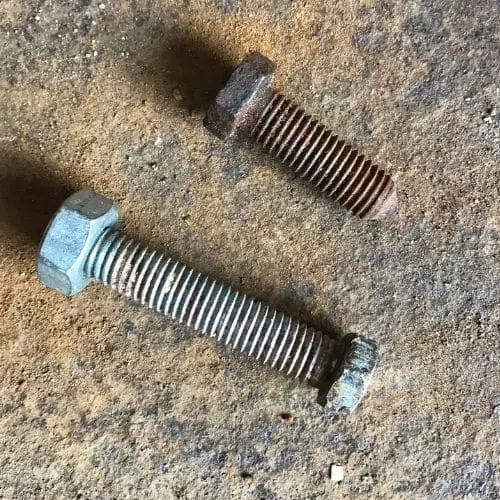How To Fix Metal Without Welding

There are many reasons for which you might need to join pieces of metal together. One of the most common methods of joining two pieces of metals together is through welding. However, there are several alternatives to welding methods that can be used to do this. It is possible to join metal pieces by methods like riveting, soldering, bolting or brazing. Other than this, nano metals and adhesives can also be used to join metal pieces together without welding.
Welding is not an easy process and not everyone knows the proper way to do it. This is when the alternatives to welding can come in handy. Other than being less time consuming, these methods also cost less. There are numerous methods for joining metals without welding. Read down below to find out how to join two pieces of metal without welding. Some of these alternatives to welding methods require heat while some don't require heat at all.
1. GLUE
This is probably one of the easiest methods of joining pieces of metal, or anything together. It is a simple process and can be done by nearly anyone. The technique of joining metal pieces is as simple as applying the glue to the surface of the metal where it needs to be joined from, pressing the metals together and letting it dry, in most cases the pieces to be glued have to be under pressure after clue is applied until it is dry.
However, ordinary glue might not be strong enough to hold metal pieces together. Hence, it is better that you use epoxy, silicone-based or polyurethane glue. These will make sure that a strong unbreakable bond is formed.
These days several types of glues are being made for this specific purpose. For instance, there are a few adhesives that have microscopic nanorods with different kind of metallic cores in them. A solid bond is formed when these are used in the areas of the metal that need to be attached together.
Pros of Gluing
- As compared to heating methods, this one is quite cheap.
- It is a sufficiently effective method of joining metal pieces together.
Cons of Gluing
- As compared to heating methods, the bond formed through gluing metal pieces is quite weaker and is not as reliable.
As you probably understand, a regular clue can not do the job properly. One that I know for sure can do the job is this one: https://amzn.to/2OIs9uY. I even know a crazy guy that used epoxy to glue a rear differential of a car instead of welding it, and it actually worked.
2. SOLDERING
Soldering is a method that is used in electronics and circuit boards and is similar to welding. However, in welding, a mechanical connection is formed whereas in the process of soldering usually an electrical connection is formed between metals. It makes use of a material known as solder which tends to melt when placed on a hot surface. Usually, a solder is composed of 99% tin, however, it might also contain other metals like zinc, copper, and silver.
Solder is an alloy that melts at a low temperature and therefore, as compared to welding, soldering requires less heat.

Pros of Soldering
- Soldering is a much safer process than welding.
- A low temperature is required to create the bond.
- It forms an electrical connection and can be useful for joining electrical devices.
Cons of Soldering
- As compared to a mechanical connection, an electrical connection is weaker.
- Since the bond is weaker, this process cannot be used for heavy-duty applications.
If you decide that soldering is a way to go, I would recommend this kit for you if you have smaller jobs at hand: https://amzn.to/2XOiYgK
Another method used to join pieces of metal together is brazing. Brazing is a similar method to soldering and welding and requires the metal to be melted so they can be joined. In this technique, a filler metal is melted and flowed into the joint where the connection needs to be made. There are many materials that can be used to make the filler metal. A few of these include nickel, silver, cobalt, copper-phosphorus and even precious metals. The melting point of these metals is higher as compared to the tin and hence a high temperature is required for the process of brazing.
In the process of brazing, a metallurgical bond is formed between the metal pieces and the filler. Capillary action is the principle by which the filler metal flows into the gap between the metals. The main difference between welding and brazing is that for the method of brazing, there is no need to melt the surface of the metals that need to be joined. Instead, the solder forms a bind by sitting between these metal pieces.
Overall, brazing is quite an effective alternative to welding and forms a solid mechanical bond between the metals.

Pros of Brazing
- Just like welding, this method also makes a strong mechanical bond between the metals.
- It can be used for several applications.
- As compared to welding, it is performed at a lower temperature.
Cons of Brazing
- Since the filler metal is soft, the bond formed is not as strong as the one formed through welding.
Brazing is one of the trickiest methods in this list, and a bit more expensive, but, if you want, there are three things you need.
- A brazing kit: https://amzn.to/2XOj087
- Brazing rods depending on the material that you are brazing: https://amzn.to/2QOTYUR
- And oxy-acetylene.
4. RIVETING
Riveting is a very useful sheet metal joining technique. Riveting is the process of joining metal pieces together by using mechanical fasteners. Rivets are used to form solid, strong and permanent bonds. Riveting is often the technique used in heavy sections as well such as boilers, bridges, tankers etc. Out of all the techniques, riveting, perhaps is the most difficult one to carry out.
For riveting, the metal pieces (that are usually very heavy) need to be held together firmly. Once that is done, a hole is drilled through the structure and a rivet is inserted in the hole, it is held against the structure strongly on one side. Afterward, you need to strike it hard on the opposite side to straighten its head. Usually, a group of four to five people is required to set the huge rivets.
However, for sheet metal, you can easily buy some small rivets as well as rivet pliers from Amazon. I have done quite a lot of riveting in my life and I must say besides welding, it is my favorite method to join sheet metal together

Pros of the Riveting
- It is the most effective method for supporting shear loads.
- This method does not require heat.
- One of the most reliable techniques for joining lightweight metals together strongly.
Cons of the Riveting
- Gaps can be left as the joints are not leakproof.
If you already have a drill, then you can grab this riveter here: https://amzn.to/37CIvOo. It is really cheap and fool-proof piece of equipment.
Bolts and nuts- Best alternative to welding
The fifth and probably most common alternative to welding besides riveting is using Bolts and nuts or just bolts if the base metal is threaded. Like with welding, bolts are used everywhere from cars to planes to bicycles. Like riveting, using bolts is an irreplaceable technique of joining two pieces of metal without welding. The greatest feature that bolts provide is the fact that the pieces joined can be disassembled later if necessary.
The process itself is not difficult at all. Like with riveting, you just need two pieces of metal with proper size holes in it. It can be accomplished with a regular drill. Once you have the holes, you just stick the bolt through the hole and screw on the nut on the other end. Sometimes it is wise to use washers as well to avoid damaging the metals.

Pros:
- The most reliable method to join metals and other materials besides welding
- Does not require heat or much special equipment besides wrench
- Really effective, especially if you need to disassemble your work later
Cons:
- The connection is not leakproof
When it comes to using nuts and bolts, it is difficult to point you to the right set. It all depends on what it is exactly you need to be done, but assuming you are working on a small/medium project, this one should have everything you need. https://amzn.to/2KTinoJ
Conclusion:
Though welding is very reliable and forms extremely solid bonds, at times it is not necessary. Also, welding costs a lot. All of the above-mentioned metal joining methods are really great ways to join metals without welding. Besides brazing, the alternative methods are not very complicated thus they do not need special skills, they are all effective and in most cases, they cost less.
If you are still considering welding, then you can check out my buyer guide on welding machines here!
Or, if you are interested in a welding kit, here is everything you need to start welding away.
How To Fix Metal Without Welding
Source: https://www.weldingmania.com/newbie/join-two-pieces-of-metal-without-welder/
Posted by: nguyenbahe1939.blogspot.com

0 Response to "How To Fix Metal Without Welding"
Post a Comment